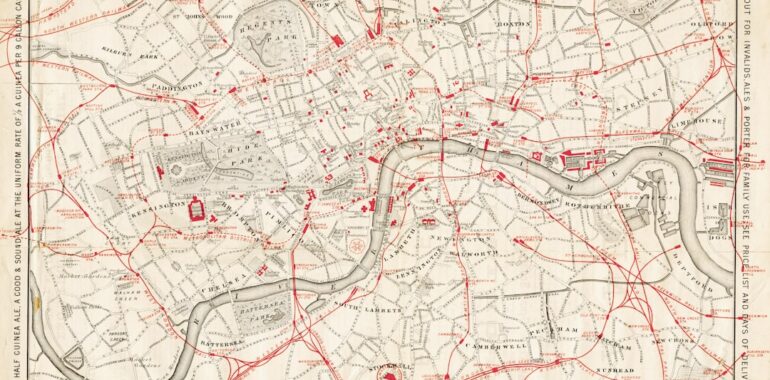The Biggest Stock Short Squeeze of the Century: Lessons from 1901’s Epic Battle

Discover the story behind the biggest stock short squeeze of the last century, where two giants clashed over a railroad, reshaping market dynamics.
Introduction
The concept of a short squeeze has been a fascinating aspect of the stock market for decades. While recent events like the GameStop saga have brought this phenomenon into the modern spotlight, its history is rich with dramatic battles that have shaped financial markets. One of the most significant in short squeeze history occurred in 1901, involving titans of the railroad industry. This epic confrontation not only determined the fate of major railroads but also left lasting lessons on market dynamics and investor behavior.
The Prelude to the Squeeze
In the late 19th century, the Union Pacific Railroad found itself in a precarious position. By 1898, it was under receivership, having slipped into bankruptcy. However, Edward Henry Harriman saw an opportunity where others saw despair. With backing from influential figures like the Vanderbilts, Rockefellers, and prominent financial firms such as Kuhn, Loeb & Co., Harriman orchestrated a takeover that saw Union Pacific emerge profitable within three years after acquiring 1,800 miles of railroad for $75 million.
Strategic Expansion
Harriman’s strategy was clear: acquisition was the most efficient way to expand and ensure profitability. By purchasing competing railroads, Union Pacific solidified its dominance in the western United States. But Harriman’s ambitions didn’t stop there. To fully control transcontinental movement, he set his sights on the Chicago, Burlington & Quincy Railroad, the key to controlling rail traffic between the East and West.
The Clash of Titans
Harriman’s move to acquire the Burlington Railroad wasn’t unchallenged. James Hill, backed by none other than J.P. Morgan, had similar aspirations for the Northern Pacific Railroad. Hill’s goal was to secure the Burlington Railroad to dominate the national rail network, particularly leveraging Northern Pacific’s stronghold in transporting cotton to Asian markets.
The Initial Battle
Charles Perkin, the president of the Burlington Railroad nearing retirement, became the focal point of this high-stakes battle. Harriman made the first bid, offering $150 per share in cash or $200 in Union Pacific bonds. Perkin rejected the offer, prompting Harriman to purchase Burlington stock openly. Not to be outdone, Hill proposed a merger with Northern Pacific and began amassing shares as well. Ultimately, Perkin favored Hill’s offer, swayed by Morgan’s influential backing.
The Short Squeeze Unfolds
The competitive fervor between Harriman and Hill set the stage for a dramatic short squeeze. Harriman, unwilling to let Hill gain full control, discreetly began accumulating shares of the Northern Pacific Railroad. As both magnates maneuvered for dominance, the market was ripe for a short squeeze.
The Mechanics of the Squeeze
A short squeeze occurs when investors who have shorted a stock—a bet that the stock’s price will fall—are forced to buy back shares at higher prices to cover their positions. In this 1901 showdown, Harriman’s efforts to gain control led to a dramatic rise in Northern Pacific’s stock price. As the price surged from $110 to $200, short sellers faced mounting losses, scrambling to cover their positions. However, the limited availability of shares meant that many couldn’t exit their shorts without incurring significant losses.
Market Panic and Resolution
The relentless price increase created panic across the stock market. Margin loan rates spiked, exacerbating the situation. In a race against time, Harriman and Hill realized the potential for total market collapse. Leveraging their influence, they brokered a truce with leading financial houses like J.P. Morgan and Kuhn, Loeb & Co. This agreement halted the forced delivery of shorted shares, allowing short sellers to close their positions at $160 per share rather than face total annihilation.
Lessons from the 1901 Short Squeeze
This historical event offers several key insights into the dynamics of short squeezes and market manipulation:
The Power of Influence
Harriman and Hill’s ability to leverage their relationships with powerful financial backers like J.P. Morgan underscores the significant impact that influential individuals and institutions can have on market movements.
Market Psychology
The event highlighted how public speculation and investor psychology can drive market behavior. The frenzy of speculation around railroad stocks created the perfect environment for a short squeeze, demonstrating the delicate balance between market confidence and panic.
Regulatory Implications
The 1901 short squeeze exposed the vulnerabilities in the market’s regulatory framework at the time. The aftermath likely influenced future regulations aimed at preventing similar market manipulations and protecting investors.
Conclusion
The 1901 short squeeze battle between Harriman and Hill remains a pivotal moment in short squeeze history. It showcases the interplay between strategic acquisitions, market psychology, and the profound effects of influential financial actors. As we examine modern short squeezes, such as those involving GameStop, the lessons from this epic battle offer valuable perspectives on navigating and understanding market dynamics.
“One look inside the Waldorf that night was enough to bring home the truth of how little we differ from animals after all.” – Broker Bernard Baruch
For more insights into market dynamics and to engage with a community of passionate investors, visit Superstonk.




